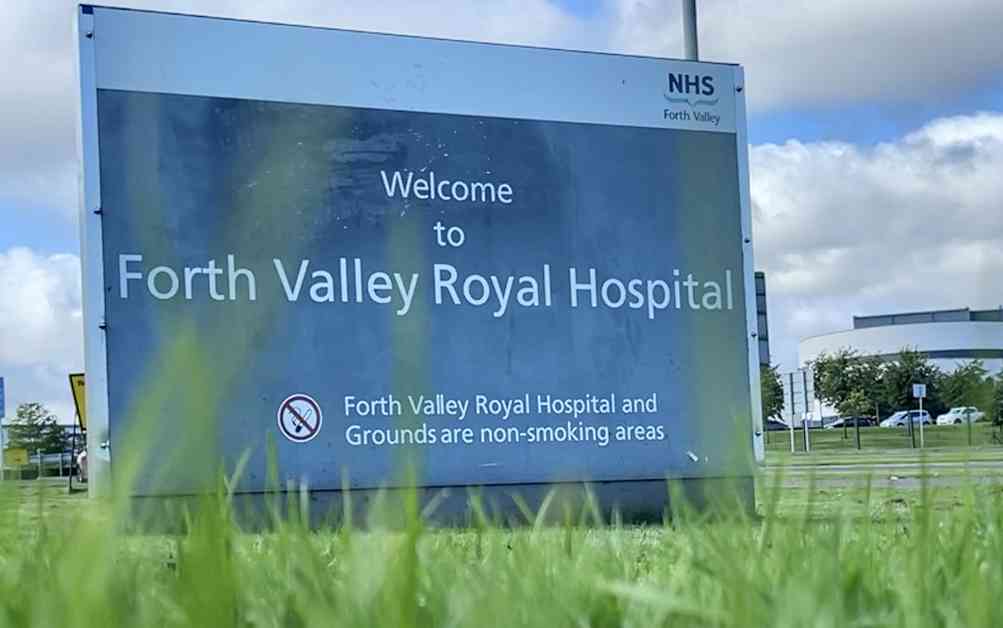Challenges in A&E Waiting Times
The recent statistics on A&E waiting times at NHS Forth Valley have sparked serious concerns among patients, healthcare professionals, and policymakers. With less than half of patients being seen within the four-hour target, the pressure on the emergency department at Forth Valley Royal Hospital is mounting. MSP Alex Rowley has taken action by writing to the cabinet secretary for health, highlighting the urgency of the situation.
According to figures from Public Health Scotland, only 47.6% of patients were seen within the four-hour target in the week ending July 2. This falls significantly short of the Scottish Government’s target of 95% of patients needing to be seen, admitted, discharged, or transferred within four hours. The data also revealed that 23.7% of patients waited more than eight hours at the A&E department, with around 10% waiting for over 12 hours.
The performance of NHS Forth Valley in meeting A&E waiting time targets has been consistently poor, with the health board ranking at the bottom of the list for that particular week. This trend is concerning, especially considering that the previous week saw a slightly better performance at 48.6%. The inability of NHS Forth Valley to meet these targets reflects broader systemic issues within the health board.
Pressure on Health and Social Care Services
MSP Alex Rowley has voiced his concerns over the increasing pressure on health and social care services in Forth Valley. He criticized the Scottish Government for failing to provide adequate support to alleviate the mounting pressures on the healthcare system. Rowley highlighted the alarming statistics of over half of attendees at NHS Forth Valley waiting over four hours, with significant percentages waiting even longer.
The lack of action from the Scottish Government in addressing the challenges faced by NHS Forth Valley has been a point of contention for Rowley. Despite the change in leadership, with the former health secretary now serving as the first minister, there seems to be a lack of tangible progress in improving A&E waiting times. Rowley emphasized the need for immediate intervention to prevent further letdowns of patients seeking emergency care.
The capacity challenges at the heart of the issue, as identified by NHS Forth Valley, are contributing to the delays in A&E services. The combination of seriously ill patients requiring admission for treatment and high numbers of discharge delays is straining the resources of the hospital. Efforts are being made to address these challenges and enhance the efficiency of health and care services across Forth Valley.
Efforts to Improve A&E Services
In response to the mounting concerns over A&E waiting times, NHS Forth Valley has implemented measures to enhance the delivery of emergency care. A new dedicated entrance to the Urgent Care Centre at Forth Valley Royal Hospital has been established to streamline the assessment and treatment of patients. This initiative aims to expedite the process of patient care and alleviate the burden on the emergency department.
The spokesperson for the health board acknowledged the progress made in reducing the number of patients experiencing very long waits in A&E. Efforts are ongoing to free up capacity and reduce delays in health and care services to ensure timely and efficient delivery of care. The continuous improvement in service delivery is crucial to meeting the healthcare needs of the community in Forth Valley.
The Scottish Government has also recognized the need for sustained improvement in A&E services across the country. Collaborative efforts are underway with NHS Forth Valley and other health boards facing similar challenges to drive down waiting times and enhance services for both patients and staff. The focus on reducing instances of delayed discharge and expanding Hospital at Home capacity reflects the commitment to improving healthcare outcomes.
As the pressures on A&E services continue to mount, it is imperative for stakeholders to work together towards sustainable solutions. The challenges faced by NHS Forth Valley are not unique, and addressing the underlying issues requires a coordinated approach. By prioritizing patient care, enhancing capacity, and streamlining processes, healthcare providers can deliver efficient and effective emergency services to those in need.
In conclusion, the concerns over A&E waiting times at NHS Forth Valley highlight the need for immediate action and sustained improvement in healthcare delivery. With collaboration between policymakers, healthcare professionals, and the community, it is possible to address the challenges and enhance the quality of emergency care services. By prioritizing patient outcomes and streamlining processes, NHS Forth Valley can work towards meeting the Scottish Government’s targets and providing timely and efficient care to all patients.



















